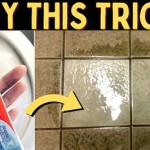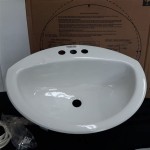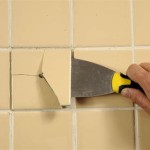Essential Aspects of Sealant Under Bathroom Sink Drain Pipe Rough In
Proper sealing around the drain pipe of a bathroom sink is essential to prevent water leaks and damage to the surrounding area. Understanding the materials and techniques involved in this process is crucial to ensure a successful installation that will last for years to come.
Material Selection for Drain Pipe Sealant
The choice of sealant for the drain pipe is critical for its durability and effectiveness. Common options include:
- Silicone Sealant: Highly flexible and waterproof, ideal for sealing gaps and joints.
- Plumbers Putty: A malleable, non-drying sealant that is easy to apply but less durable than silicone.
- Butyl Tape: A self-adhesive tape that forms a water-tight seal around the drain pipe.
For most bathroom sink drain pipe installations, silicone sealant is the preferred option due to its exceptional water resistance and longevity.
Preparation for Sealant Application
Before applying the sealant, it is essential to ensure the surfaces are clean and dry. Remove any debris or old sealant from the drain pipe and the area around it using a wire brush or sandpaper.
Sealant Application
The specific application process may vary slightly depending on the type of sealant used. For silicone sealant, follow these steps:
- Apply a continuous bead of sealant around the drain pipe, filling any gaps between the pipe and the sink.
- Smooth the sealant with a damp finger or a plastic tool to ensure a uniform seal.
- Wipe away any excess sealant or smudges with a damp cloth.
For plumbers putty, apply a small amount around the drain pipe and mold it into a cone shape. Press the cone into the gap between the pipe and the sink and smooth it out with your finger.
Curing and Maintenance
Depending on the sealant used, it may take several hours or even days to fully cure. Allow the sealant to dry completely before using the sink.
Regularly inspect the sealant for signs of damage or deterioration. If necessary, apply a fresh bead of sealant to maintain a water-tight seal.
Additional Tips
- Use a high-quality sealant specifically designed for bathroom applications.
- Ensure the sealant is compatible with the materials of the sink, drain pipe, and any other components in contact with the sealant.
- Follow the manufacturer's instructions on the sealant packaging for proper curing time and maintenance recommendations.
By carefully considering the material selection, preparation process, and application technique, you can ensure that the sealant under your bathroom sink drain pipe is effective and long-lasting, preventing water damage and maintaining the integrity of your bathroom.

Common Sink Leaks You Could Probably Fix Yourself
What Is The Best Pipe Repair Tape To Stop Leaks Under A Sink Quora

The 10 Most Common Plumbing Mistakes Diyers Make
Question Bathroom Sink Drain Leak At Down Pipe Rubber Seal Diesel Place
What Material Can Be Used To Stop A Kitchen Sink Drain Pipe Leaking At The Connection Quora

The Best Way To Clean A Sink P Trap Bell Brothers

How To Caulk A Bathroom Sink

Replace A Trap And Add Cleanout Fine Homebuilding

How To Close Openings Around Pipes Under A Kitchen Sink Hunker

Oatey 1 2 In Sink Drain Pipe D Rubber Washer Pack Hdc7195c The Home Depot
Related Posts







